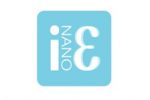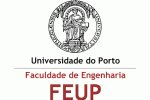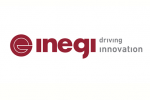Innovative nano-technology for Wave Energy Conversion!
I.nano.WEC aims to develop the first marine buoy prototype integrating highly efficient energy harvesting systems based on triboelectric nanogenerators!
The Technology
TENG
There are many ways to convert kinetic and potential energy into electricity, and the most famous one is based on Faraday´s law: when a permanent magnet is moved relative to a wire, or vice versa, an electromotive force is created and electric current starts flowing through the wire. Many applications were born from this basic principle, taking advantage of natural forces (wind, moving water and heat) that are capable of moving very big magnets (turbines) relative to a conductor to generate electricity.
However, another physics principle that most people still haven´t heard about is the triboelectric effect, which generates electric current when two different materials come into physical contact with each other.
Triboelectric nanogenerators (TENGs) are based on two fundamental processes: contact electrification and electrostatic induction. Upon contact between the two working surfaces of the TENG, at least one of which is a dielectric material, the surface with higher negative, or positive, charge affinity will attract negative, or positive, charges from the other surface. Once the charges are transferred, the charges at the dielectric surface induce opposite charges on the electrodes. As the two working surfaces move relatively to each other, the induced charges move across the external circuit to provide power to external loads.

Marine buoys
The use of buoys in the navigation and as signaling is probably the best known and the most antique form of application being part of this group. The navigational buoys follow an international convention, promoted by IALA, which divides the world into two large segments: Europe, most of Asia, Africa and Oceania, known as Region A and the Americas, Japan, Philippines, Korean Peninsula and Taiwan, known as Region B. There are six groups of marks that help a safe navigation through channels, rivers, and so on. These are called Hand Marks, Cardinal Marks, Isolated Danger Marks, Safe Water Marks, Special Marks and New Hazard Marks.

The Project
The i.nano.wec project!
The I.nano.WEC aims to develop the first marine buoy prototype integrating highly efficient energy harvesting
systems based on triboelectric nanogenerators. This achievement could foster the continuous monitoring
of environmental and human activities in remote oceanic locations, enabling the long term deployment of
energetically autonomous systems for the aquaculture, signalling or metocean markets!

Partnership



